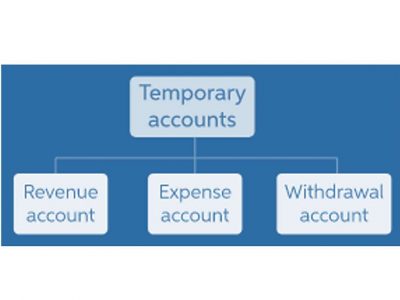
Retained earnings are therefore an accounting entry which acts as a reserve for unallocated earnings, pending arbitration. There’s almost an unlimited number of ways a company can use retained earnings. Shareholders, analysts and potential investors use the statement to assess a company’s profitability and dividend payout potential. Retained earnings act as a reservoir of internal financing you can use to fund growth initiatives, finance capital expenditures, repay debts, or hire new staff. Retained earnings refer to the money your company keeps for itself after paying out dividends to shareholders. At the retained earnings normal balance beginning of the year, ABC Corporation’s Retained Earnings account had a balance of $50,000 (credit).

What is the Normal Balance of Retained Earnings?
Since the purpose of the contra account is to be offset against the balance on another account, it follows that the normal balance on the contra account will be the opposite of the original account. Dear auto-entrepreneurs, yes, you too have accounting obligations (albeit income summary lighter!). Accounting books, annual accounts, compulsory chartered accountants… This reduction happens because dividends are considered a distribution of profits that no longer remain with the company.
Recording changes in Income Statement Accounts
- According to the provisions in the loan agreement, retained earnings available for dividends are limited to $20,000.
- You gain actionable insights into payments, overdue invoices, and cash flow trends.
- What is the purpose of a contribution to a partner’s current account?
- Segregated by accounting periods, a company communicates financial results through the balance sheet and income statement to employees and shareholders.
- The interaction between debits and credits reflects underlying economic events.
- In contrast, operating expenses, like office supplies, are fully expensed in the period incurred.
- Changes in the composition of retained earnings reveal important information about a corporation to financial statement users.
When a company generates net income, it is typically recorded as a credit to the retained earnings account, increasing the balance. In contrast, when a company suffers a net loss or pays dividends, the retained earnings account is debited, reducing the balance. For a more detailed retained earnings explanation, it’s essential to understand that retained earnings grow over time as the company generates profit. When a company earns net income, it can choose to distribute some of that income as dividends to shareholders.

Recognizing and Calculating Bad Debt Provisions in Accounting
Retained earnings and profits are related concepts, but they’re not exactly the same. If you’re trying to streamline your business, manually logging entries into ledgers or using an Excel spreadsheet is only going to slow you down.
- Retained earnings is an equity account, and like most other equity accounts, it increases with credit entries and decreases with debit entries.
- They represent the portion of equity that has been reinvested into the company rather than paid out as dividends.
- In today’s financial environment, understanding accounting fundamentals is essential for both businesses and individuals.
- Liability accounts have a normal credit balance – they increase with a credit entry.
- Or a board of directors may decide to use assets resulting from net income for plant expansion rather than for cash dividends.
Retained earnings appropriations

Yes, having high retained earnings is considered a positive sign for Partnership Accounting a company’s financial performance. Retained earnings, on the other hand, refer to the portion of a company’s net profit that hasn’t been paid out to its shareholders as dividends. First, revenue refers to the total amount of money generated by a company. It is a key indicator of a company’s ability to generate sales and it’s reported before deducting any expenses. Retained earnings are reported in the shareholders’ equity section of a balance sheet.

For the past 52 years, Harold Averkamp (CPA, MBA) hasworked as an accounting supervisor, manager, consultant, university instructor, and innovator in teaching accounting online. Its abbreviation is dr. (Apparently the Italian or Latin word from which debit was derived included an “r”). To get started, let’s review some facts that you should already be aware of as a bookkeeper, accountant, small business owner, or student. For the past 52 years, Harold Averkamp (CPA, MBA) has worked as an accounting supervisor, manager, consultant, university instructor, and innovator in teaching accounting online.
- Debit amounts are entered on the left side of the “T” and credit amounts are entered on the right side.
- It also indicates that a company has more funds to reinvest back into the future growth of the business.
- It should be noted that if an account is normally a debit balance it is increased by a debit entry, and if an account is normally a credit balance it is increased by a credit entry.
- When a company earns net income, it can choose to distribute some of that income as dividends to shareholders.
- From the table above it can be seen that assets, expenses, and dividends normally have a debit balance, whereas liabilities, capital, and revenue normally have a credit balance.
- Shareholders’ equity, which refers to net assets after deduction of all liabilities, makes up the last piece of the accounting equation.
If accountants see the cash account holding a negative balance, they check first for errors and then investigate whether the account is overdrawn. Liabilities have opposite rules from asset accounts, since they reside on the other side of the accounting equation. To keep the accounting equation balanced, accountants record liability account increases in the opposite manner of asset accounts. Liability accounts have a normal credit balance – they increase with a credit entry. An abnormal, or debit balance, may indicate an overpayment on a bill or an accounting error.
